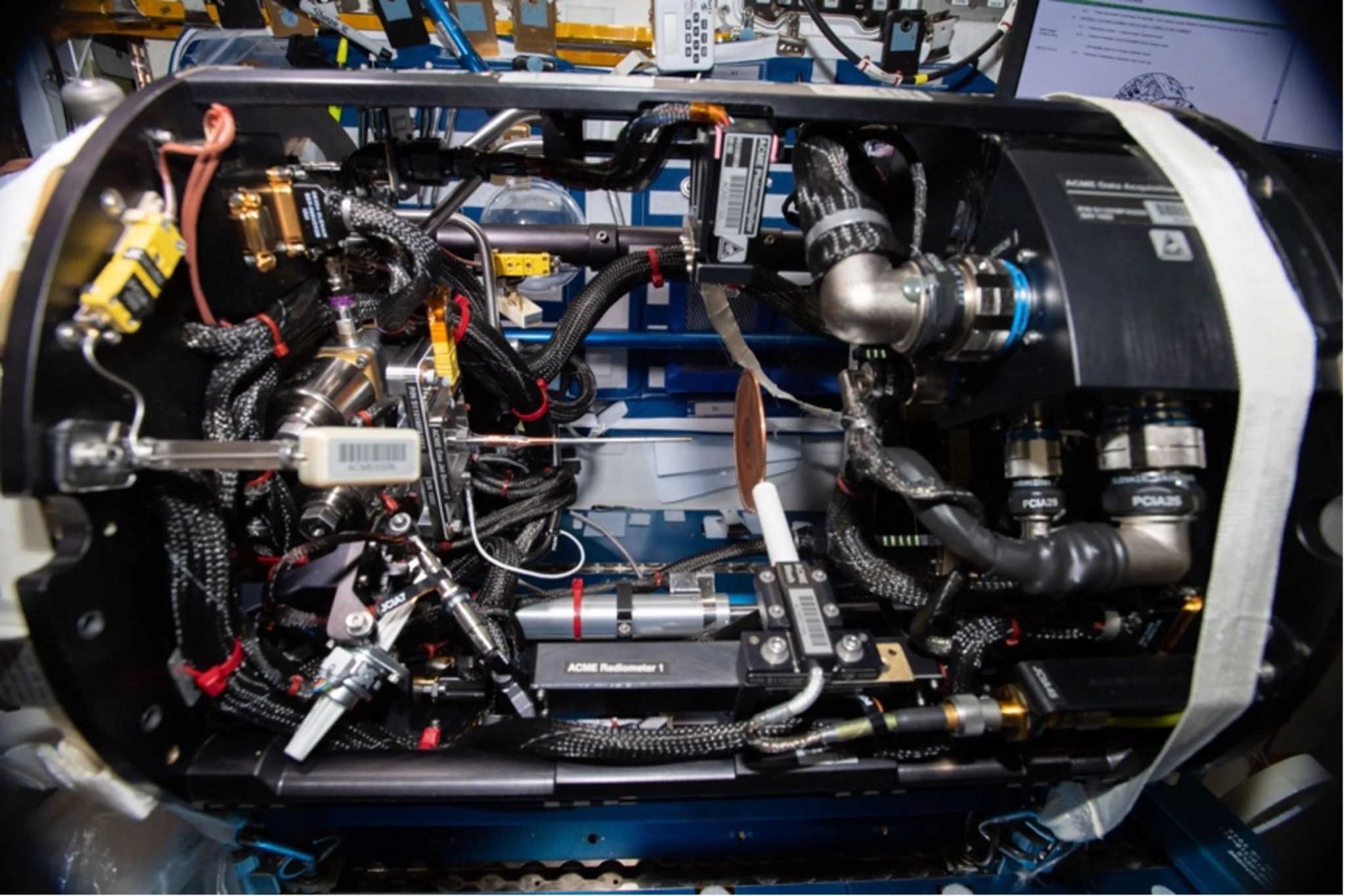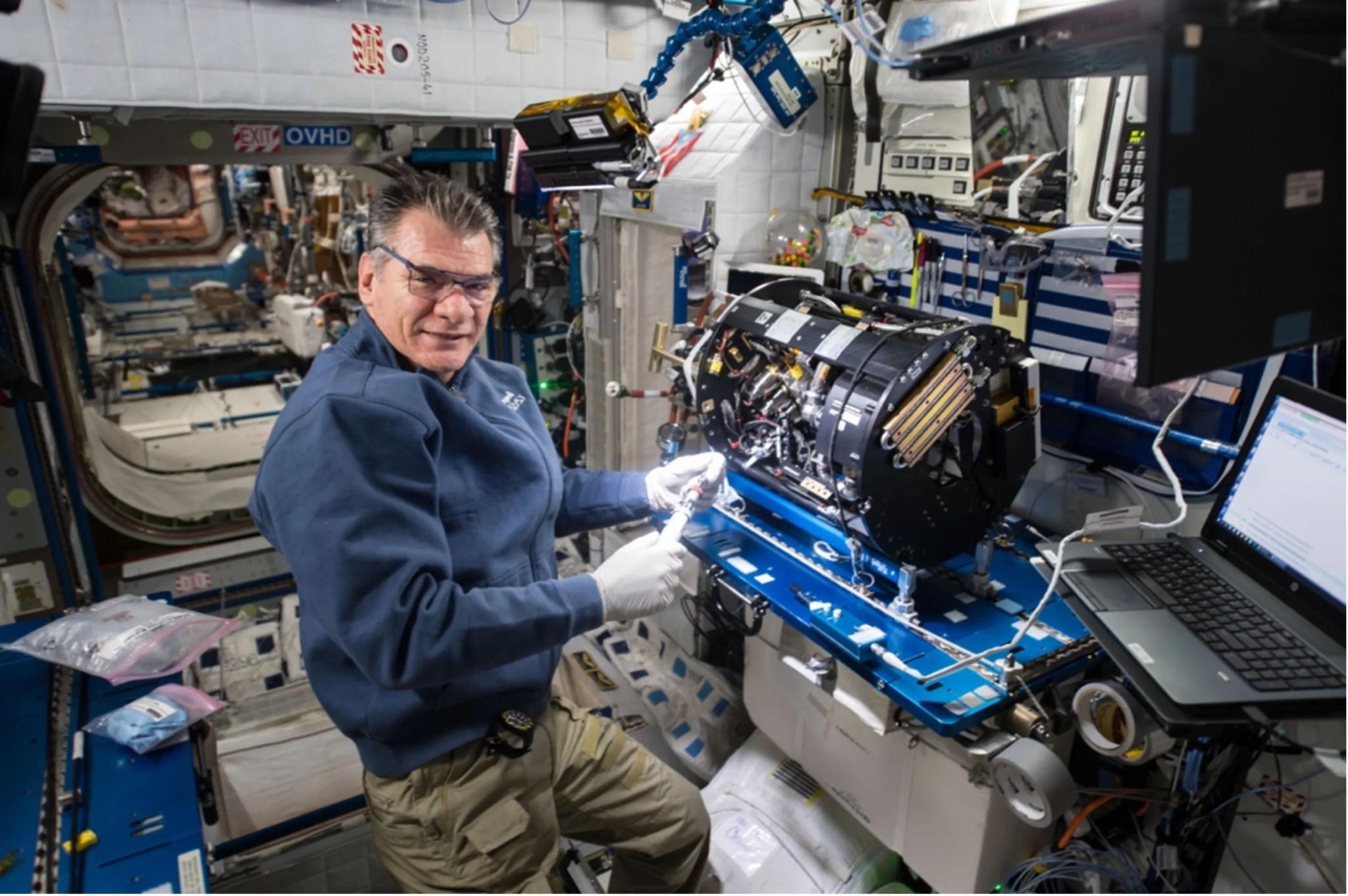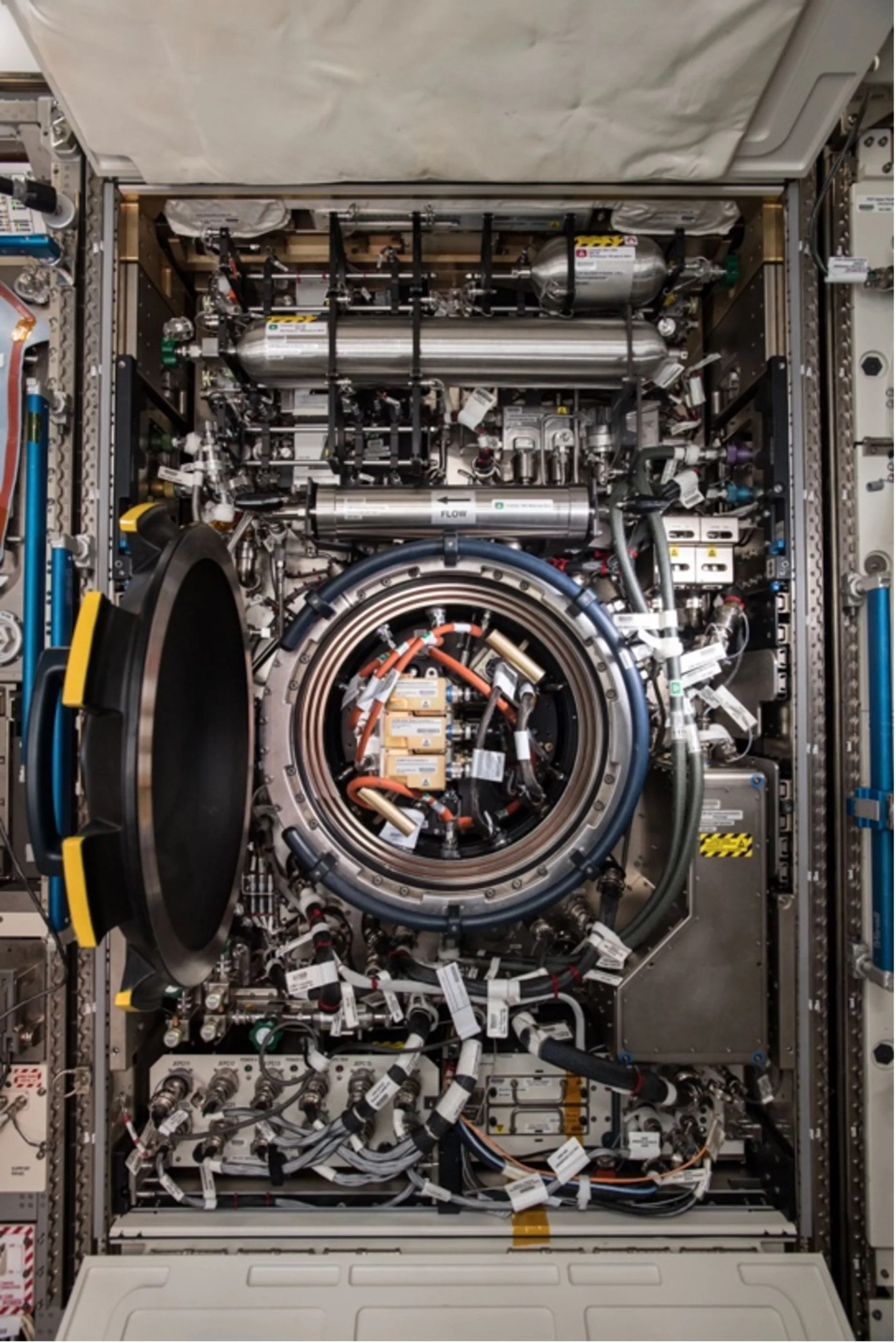Coflow Laminar Diffusion Flame (CLD Flame)
Science Objectives
The Coflow Laminar Diffusion Flame (CLD Flame) experiment is conducted in the Combustion Integrated Rack (CIR) on the International Space Station, as part of the Advanced Combustion via Microgravity Experiments (ACME) project. In this experiment, the flame - burning a gaseous fuel - is surrounded by air flowing in the same direction. Measurements are made of flame characteristics such as the size, structure, temperature, soot, and stability. Conducting the tests in microgravity allows for great simplifications in the analysis, enabling new understanding and the development of more efficient and less polluting combustion technology for use on Earth.
Experiment Description
Research conducted in microgravity has revealed that our current predictive ability is significantly lacking for flames at the extremes of fuel dilution, namely for sooty pure-fuel flames and dilute flames that are near extinction. The general goal of the Coflow Laminar Diffusion Flame (CLD Flame) experiment is to extend the range of flame conditions that can be accurately predicted by developing and experimentally verifying chemical kinetic and soot formation submodels. The dependence of normal coflow flames on injection velocity and fuel dilution is carefully examined for flames at both very dilute and highly sooting conditions. Measurements are made of the structure of methane and ethylene flames in an air coflow, where the fuels are often diluted with nitrogen. Lifted flames are used as the basis for the research to avoid flame dependence on heat loss to the burner. The results of this experiment are directly applicable to practical combustion issues such as turbulent combustion, ignition, flame stability, and more.
Space Applications

The CLD Flame research is not being conducted to serve any space applications, but it is possible that its findings could aid the development of future space-based combustion devices (e.g., for solid waste processing).
Earth Applications
The combustion of fossil fuels is humanity’s primary source of energy and is used to produce electricity and for heating, transportation, and more. But it is also the primary human source of greenhouse gas and acid rain. Innovative combustion research conducted on the space station can yield new understanding of the intricacies of combustion enabling improved efficiency and reduced pollutant emission in practical combustion on Earth. Furthermore, improved design capability can enable reduced time and cost in the development of new furnaces and engines.

































